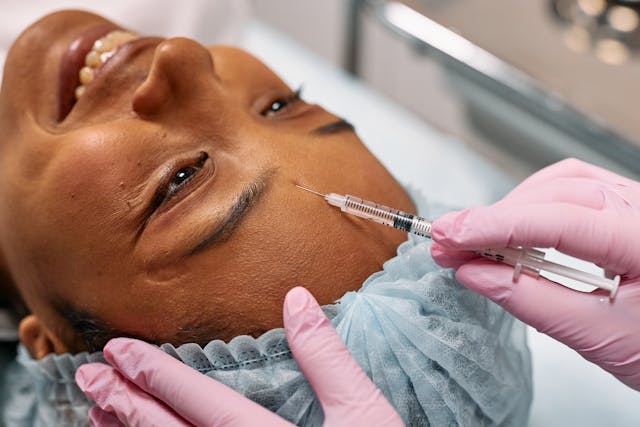Wrinkles can change the way you feel about your appearance. Understanding Botox effects opens the door to smoother skin and more confidence. Whether you’re considering it for cosmetic reasons or medical conditions, there’s a lot to know.

How Does Botox Work?
Botulinum toxin, derived from the bacteria Clostridium botulinum, is the main ingredient in botox injections. It’s the same toxin linked to food poisoning but used in controlled amounts, making it safe for specific applications. Botox injections target nerve endings, reducing muscle activity that causes wrinkles or other health issues.
When injected into facial muscles, botulinum neurotoxin temporarily blocks signals between nerves and muscles. This relaxes dynamic wrinkles—the ones that form from repetitive facial expressions, such as frown lines or crow’s feet. Cosmetic treatment with botox has become the most common cosmetic procedure globally for its effectiveness and quick results.
Benefits Beyond Smooth Skin
Botulinum toxin injections aren’t just for facial wrinkles. They’re used to treat various health conditions. For example, chronic migraine sufferers often find relief when botox is injected into specific treatment areas. Cervical dystonia, a disorder causing severe neck muscle spasms, also responds well to botulinum toxin type treatments. Other medical conditions addressed include overactive bladder, excessive sweating, and muscle spasms related to cerebral palsy.
Plastic surgeons also use botulinum neurotoxins in combination with other treatments to address medical and cosmetic indications. It’s a versatile option for many people looking to improve quality of life or enhance appearance.
Common Side Effects and Safety
Every procedure carries risks, and botox injections are no different. The most common side effects include mild bruising, muscle weakness near the injection site, and flu-like symptoms. Drooping eyelids or blurred vision may occur if botulinum toxin spreads beyond the intended area.
Some individuals report trouble swallowing or breathing problems after treatment. These serious adverse effects are rare but require immediate medical attention. Botox is generally considered safe when administered by a qualified healthcare provider.
Medical Applications of Botox
Botulinum toxin has been approved by the Food and Drug Administration (FDA) for various medical conditions. For those with neurological disorders, botulinum toxin injection can ease symptoms by relaxing affected muscles. People with crossed eyes, neck spasms, or bladder problems often benefit from this treatment.
Pain management is another area where botulinum neurotoxins shine. From severe neck pain to nerve-related issues, the injection offers relief in many cases. Clinical trials continue to explore additional treatment options, showing promising results for expanding botox’s applications.
Precautions Before Treatment
Discussing medical history with a healthcare provider is crucial before undergoing botox treatment. Those with conditions like myasthenia gravis or allergic reactions to botulinum toxins should avoid the procedure. Breastfeeding individuals or those on blood thinners should also consult their doctor.
Avoid nonsteroidal anti-inflammatory drugs before the procedure to reduce the risk of bruising. Following these guidelines minimizes side effects and ensures the best results.
What to Expect During the Procedure
Botulinum toxin injection involves several injections into the targeted area. For cosmetic use, this could mean treating facial wrinkles like frown lines or crow’s feet. For medical purposes, such as managing urinary incontinence or neck spasms, injections are tailored to the condition.
The process is quick, often taking less than 30 minutes. Plastic surgeons or trained professionals perform the procedure with precision to avoid affecting unintended areas. Mild discomfort may occur, but most people find the pain manageable.
Recovery and Results
Results from botox injections typically appear within a few days and last three to six months. Muscle activity gradually returns, making follow-up appointments necessary for maintaining the effect. Some individuals experience mild bruising or swelling at the injection site, which resolves within days.
Botox effects are temporary, but their impact can be life-changing for those dealing with health conditions or cosmetic concerns. Whether it’s reducing dynamic wrinkles or managing chronic pain, the treatment continues to grow in popularity.
The Takeaway
Confidence often starts with feeling good in your skin. Learning about botox effects helps you make informed decisions for cosmetic or medical treatments. Whether you’re smoothing wrinkles or addressing health issues, botulinum toxin offers a wide range of benefits. Always consult a qualified healthcare provider to ensure safety and effectiveness.
Frequently Asked Questions
How does a botox injection work?
A botox injection relaxes the injected muscles by blocking nerve signals in the treatment area.
Is botulinum toxin the same as tetanus toxin?
Botulinum toxin and tetanus toxin both come from the same bacterial family but have different effects on the body.
What is Botox Cosmetic used for?
Botox Cosmetic is primarily used to reduce wrinkles and smooth lines in targeted treatment areas.
















Add Your Comment